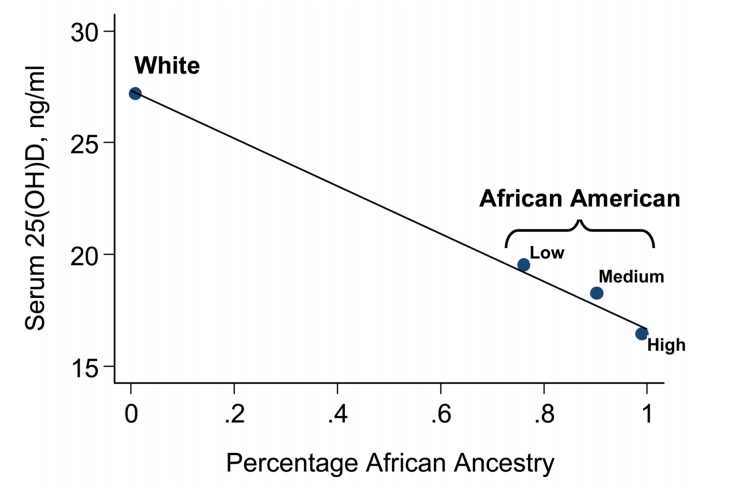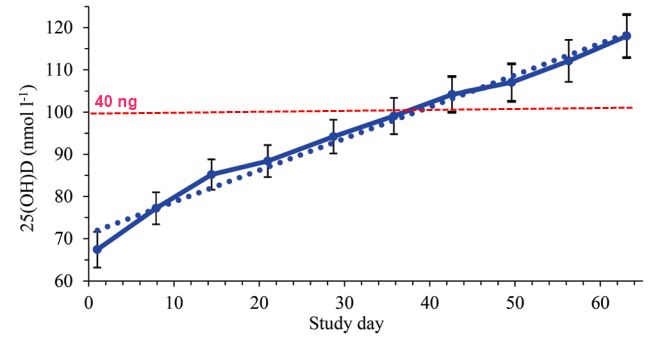Response to UV varies more with pigment genes and age than skin color
Pigment genes not skin pigmentation affect UVB-induced vitamin D
Photochemical & Photobiological Sciences, DOI:10.1039/C8PP00320C
Pameli Datta, Peter Alshede Philipsen, Peter Olsen, Bibi Petersen, Jeppe Dyrberg Andersen, Niels Morling and Hans Christian Wulf
 The more the African Ancestry, the lower the vitamin D level – July 2010
The more the African Ancestry, the lower the vitamin D level – July 2010
📄 Download the PDF from Sci-Hub via VitaminDWiki
Vitamin D levels increased during the trial


Skin pigmentation is believed to contribute to the generally low serum 25-hydroxyvitamin D (25(OH)D) concentrations observed in darker-skinned persons. The influence of measured skin pigmentation on UVB-induced 25(OH)D increase was investigated together with 9 demographic and 13 genetic parameters (pigment SNPs).
Forty participants representing a wide range in measured skin pigmentation were exposed to identical UVB doses on identical body areas over nine weeks with weekly measurements of serum 25(OH)D.
This study took place in Denmark during winter, a period with negligible ambient UVB, so variation in 25(OH)D synthesis was not influenced by latitude, season, sun and clothing habits.
The increase in 25(OH)D concentration displayed considerable variation (range: 2.9 to 139 nmol L-1) .
Constitutive and facultative skin pigmentation exerted separate influence on the variation of the UVB-induced linear 25(OH)D increase. However, this influence was statistically non-significant in the presence of separate significant pigment SNPs.
The variation in the 25(OH)D increase in the combined linear model was not explained by measured skin pigmentation but by sex, height, age and seven SNPs located in the ASIP, MTAP, MIR196A29 and Solute Carrier Family genes.
This linear model including individual intercepts and the 10 parameters influencing the slope explained 77.4% of the variation.
This study confirmed the influence of sex, age and height on 25(OH)D increase and found that pigment genes provided a better relation to UVB-induced 25(OH)D increase compared to the actual measured skin pigmentation. Therefore, only investigating skin pigmentation obscure other causal parameters for low 25(OH)D.
New title for this page March 2019. caused the visitor count to reset.
There have actually been visitors to this page since it was originally made
